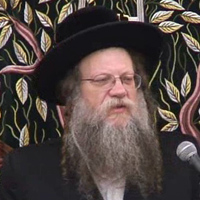- Sections
- Peninei Halakha
Technically, there is no obligation to sleep or lie on the ground on Tisha Be-Av. This is because the Sages’ statement, "All mitzvot that apply to a mourner apply on Tisha Be-Av" (Ta’anit 30a), refers only to prohibitions, like washing, anointing oneself, wearing high-quality shoes, engaging in sexual relations, greeting others, and studying Torah. However, the mitzvot that a mourner must observe, like turning over his bed and sitting on the floor, technically do not apply on Tisha Be-Av (Tur §555). Nonetheless, it is customary to express our mourning on Tisha Be-Av in the way we lie down and sit as well. Since this law is based on custom, however, it is more lenient than the other prohibitions, as we will explain presently.
Some people sleep on the ground on Tisha Be-Av; others sleep without a pillow; still others place a stone beneath their heads (sa 555:2). One who finds it difficult to sleep in this manner may sleep normally (mb 555:6). The prevalent custom is to place one’s mattress on the ground, thus precluding the need to remove one’s pillow. It is best to place a stone underneath the mattress. This way, one observes the custom of mourning without making it too difficult to fall asleep.
It is customary to sit on the ground like mourners on Tisha Be-Av. However, since there is technically no halakhic obligation to do so, we are not stringent about this for the entire day (Baĥ 559:1). The Ashkenazic custom is to sit on the ground until midday, while the Sephardic custom is to do so until Minĥa (sa and Rema 559:3). Thus, one who takes a nap in the afternoon does not need to place his mattress on the ground.15
We already learned (above 9:3) that some have a kabbalistic custom to refrain from sitting on the ground without a piece of cloth or wood between one’s body and the floor (Birkei Yosef 555:8). If the floor is tiled, however, many poskim maintain that there is no need for a separation, even according to Kabbala. Some are meticulous and use a separation even on tiled floors.
Since there is technically no obligation to sit on the ground, one may sit on a small cushion or a low bench, but they should preferably be no higher than a tefaĥ (handbreadth) off the ground. If it is difficult to sit so low, one may be lenient and sit on a chair that is less than three tefaĥim high. If even this is difficult, one may sit on a chair that is slightly higher than three tefaĥim.16 Sitting on stairs is considered sitting on the ground, because people step on them (Mekor Ĥayim).
Pregnant women, elderly people, sick people, and those who suffer from back pain – who find it difficult to sit on a low chair – may sit on regular chairs (ahs yd 387:3).

Laws of Yom Kippur
Rabbi Eliezer Melamed | 5 Tishrei 5784

5. Lasting Spiritual Accomplishments
Chapter 11: Hanuka
Rabbi Eliezer Melamed | Cheshvan 29 5782

15. Candle Lighting at Public Gatherings
Chapter 12: Lighting the Hanuka Candles
Rabbi Eliezer Melamed | Kislev 10 5782

4. The Proper Time and Duration of Lighting
Chapter 13: When and Where to Light Hanuka Candles
Rabbi Eliezer Melamed | Kislev 10 5782

Performing a Proper Hesped
Rabbi Yirmiyohu Kaganoff | 5771

Performing a Proper Hesped
Rabbi Yirmiyohu Kaganoff | 5771

The Laws of Torah Study
Part 3
Rabbi Eliezer Melamed | 5761

Prayer for Redemption and Blessings for Mashiach
Rabbi Avraham (Abe) Abrahami

Ask the Rabbi: Scratching Improperly Parked Cars
Rabbi Daniel Mann | Iyar 5785
Daf Yomi Makkot Daf 19
R' Eli Stefansky | 29 Nisan 5785






